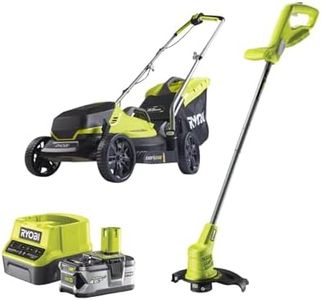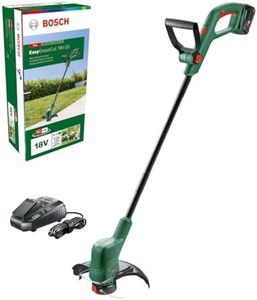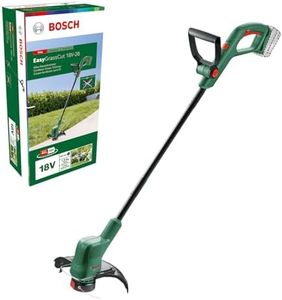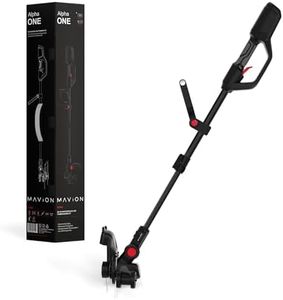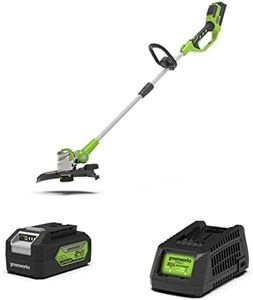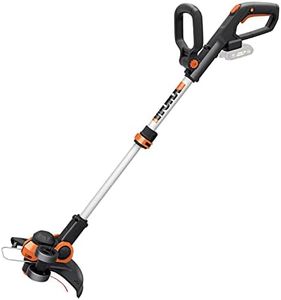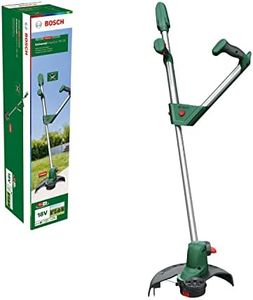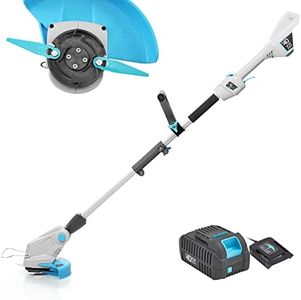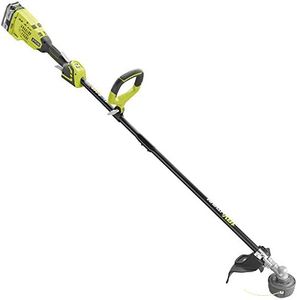We Use CookiesWe use cookies to enhance the security, performance,
functionality and for analytical and promotional activities. By continuing to browse this site you
are agreeing to our privacy policy
10 Best Battery Powered Weed Trimmer
From leading brands and best sellers available on the web.By clicking on a link to a third party's website, log data is shared with that third party.
Buying Guide for the Best Battery Powered Weed Trimmer
Choosing a battery-powered weed trimmer is all about selecting the right balance between performance, convenience, and comfort to match your yard maintenance needs. Before starting your search, think about the size of your yard, how often you plan to use the trimmer, and your tolerance for weight and noise. A good fit will make garden upkeep easier and much more enjoyable, so taking time to understand the key features will help you narrow down your options.Battery Voltage (V)Battery voltage tells you how powerful the trimmer is. Higher voltage usually means the trimmer can handle thicker weeds and grass with more ease. Trimmers commonly range from around 18V to 60V or higher. Lower-voltage trimmers are lighter and suitable for small, simple lawns, while higher-voltage models are heavier but better for more demanding jobs or larger areas. Think about the type of growth in your yard: lighter if you just have grass edges, heavier if you face tough weeds and overgrowth.
Battery Capacity (Ah)Capacity, measured in amp-hours (Ah), decides how long your trimmer can run on a single charge. Larger capacities usually mean longer working time but also a heavier battery. Typical capacities might range from 2Ah to 5Ah and above. For occasional, quick jobs, a lower capacity is fine; for bigger yards or more frequent use, look for higher capacity so you aren’t always stopping to recharge.
Cutting WidthThe cutting width is how wide a strip the trimmer will cut in one pass, often between 10 and 16 inches. A wider cutting width helps you finish faster on open areas, but smaller widths give better control in tight spaces or around delicate plants. Choose a cutting width based on the layout of your yard: more open space means a wider width is helpful, while lots of beds and borders benefit from a narrower width.
WeightTrimmer weight can affect how comfortable it is to use, especially for longer sessions or for people with less upper-body strength. Lighter trimmers, often under 8 pounds, are easier to handle but may have less power or battery life, while heavier trimmers can be tiring but are often more robust. Choose a weight that you feel you can handle comfortably throughout the job you need to do.
Line Feed SystemThe line feed system describes how the trimmer advances new cutting line: manual, bump feed, or automatic. Manual requires you to stop and extend the line by hand, bump feed lets you tap the head to extend more, and automatic does it on its own. If you value convenience and don’t want to interrupt your work, automatic is easiest, but manual might be simpler and more reliable for occasional use.
Adjustability and ErgonomicsFeatures like adjustable handles, telescoping shafts, or rotating heads let you customize the trimmer for your height and for different angles of trimming. Good ergonomics make the tool easier on your back and arms, especially for taller or shorter users or anyone with joint concerns. Always think about who will be using it most and what positions you’ll need most often.
Charging TimeCharging time is how long it takes to fully recharge the battery. Fast-charging batteries can save you a lot of downtime, while longer charging is fine if you plan your trimming in advance. If you need to get jobs done quickly or often forget to charge, prioritize a shorter charging time or consider getting a spare battery.
